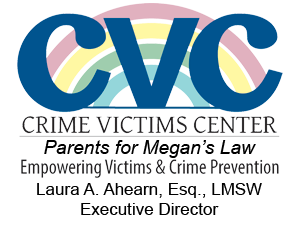Statistics - Rape
Who Are The Victims?
-
According to the US Department of Justice, one person is raped every 2.7 minutes in the United States.[1]
-
1 out of every 6 American women have been the victims of an attempted or completed
rape in their lifetime (14.8% completed rape; 2.8% attempted rape).[2] -
1 in 33 American men have experienced an attempted or completed rape in their lifetime.[3]
-
77% of rapes/sexual assaults were perpetrated by someone known to the victim (a
non-stranger).[3] -
47% of are a friend or acquaintance.
-
25% are an intimate.
- 5% are a relative.
-
More than half of rape/sexual assault incidents were reported by victims to have occurred within 1 mile of their home or at their home.[1]
-
In 2005, victims age 12 or older experienced 191,670 rapes/sexual assaults.[4]
-
15% of sexual assault and rape victims are under the age of 12.[5]
-
44% of sexual assault and rape victims are under age 18.[5]
-
In 2005, 65% of all rapes and sexual assaults were not reported to law enforcement. [6]
-
People ages 16 to 19 had a higher rate of sexual victimization of any age group.[5]
-
66% of all prostitutes were sexually abused as children.[7]
-
A review of sexual assault cases in an emergency department found that 12% of cases were identified as suspected drug-facilitated cases.[8]
-
Girls ages 16-19 are 4 times more likely than the general population to be victims of rape, attempted rape, or sexual assault.[5]
What Are The Effects Of Rape?
-
Victims of sexual assault are 3 times more likely to suffer from
depression, 6 times more likely to suffer from post-traumatic stress disorder, 13 times more likely to abuse alcohol, 26 times more likely to abuse drugs and 4 times more likely to contemplate
suicide.[9] -
In 2004-2005, 64,080 women were raped. According to medical reports,
the incidence of pregnancy for one-time unprotected sexual intercourse is 5%. By applying the pregnancy rate to 64,080 women, RAINN estimates that there were 3,204 pregnancies as a result of
rape during that period.[3] -
Women who experienced sexual abuse as a child are 2 to 3 times more
likely to be sexually assaulted later in life.[10]
References
[1] US Department of Justice 2005 National Crime Victimization Study, 2005.
[2] National Institute of Justice & Centers for Disease Control & Prevention. Prevalence, Incidence and Consequences of Violence Against Women Survey. 1998.
[3] Rape, Abuse and Incest Network (RAINN) RAINN, http://www.rainn.org/get-information/statistics/sexual-assault-victims
[4] Shannan M. Catalano, “Criminal Victimization, 2005,” (Washington, DC: Bureau of Justice Statistics, 2005),3.
[5] US Department of Justice Sex Offense and Offenders Study. 1997.
[6] United States Department of Justice, Victimization Not Reported to Police, 2006-2010, NCJ238536. http://www.bjs.gov/content/pub/pdf/vnrp0610.pdf
[7] Silbert, M. “Compounding Factors in the Rape of Street Prostitutes.” Cited in Wolbert-Burgess, A. Rape and Sexual Assault II. Garland Publishing, Inc. New York 1988, p.77.
[8] Margret J. McGregor et al., “An exploratory Analysis of Suspected Drug Facilitated Sexual Assault Seen in a Hospital Emergency Department,” Women and Health 37, no. 3 (2003).
[9] World Health Organization. 2002 (https://rainn.org/get-information/statistics/sexual-assault-victims)
[10] Arata, C. (2002) Child Sexual Abuse and Sexual Revictimization. Clinical Psychology, 9: 135-164.
